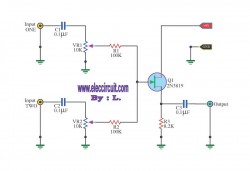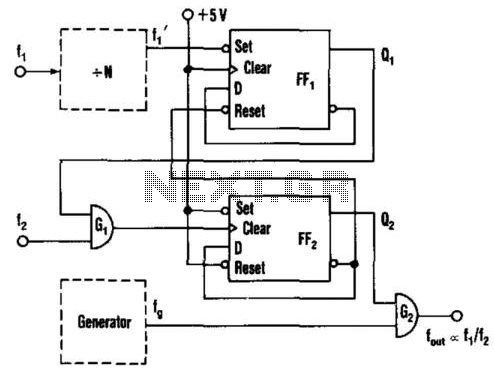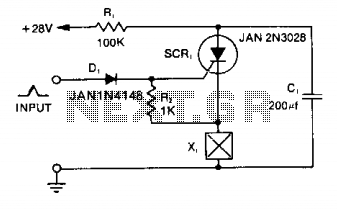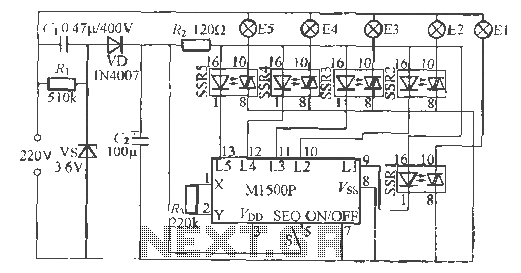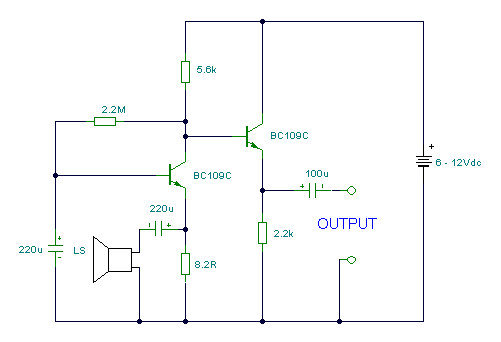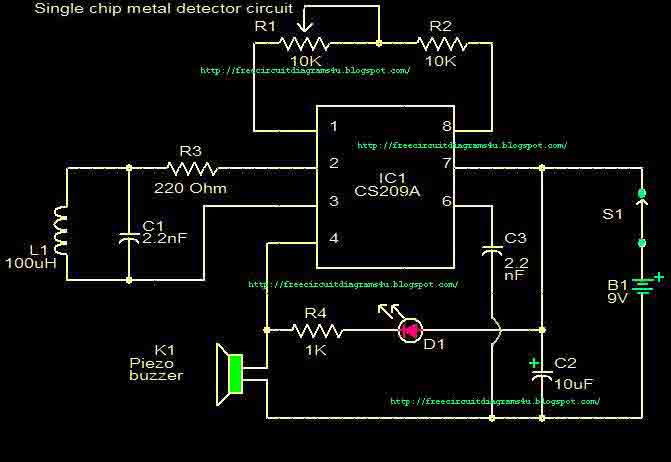
Dual Tone Model Train Horn/Sound Generator Circuit using 556 IC
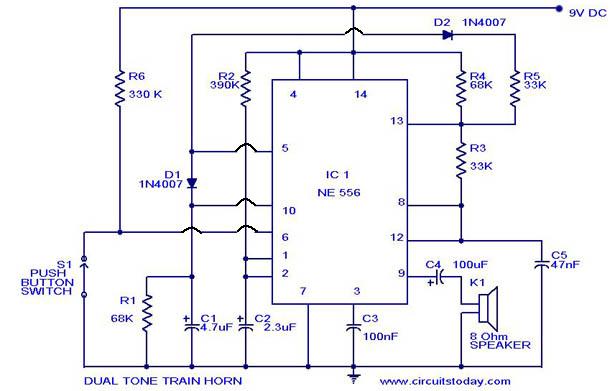
A dual-tone model train horn/sound generator/simulator circuit can be created using two NE 555 timers connected in cascade. However, the circuit diagram presented is designed with the NE 556 integrated circuit, which essentially comprises two 555 timers in a single package.
The circuit utilizes the NE 556 IC to generate two distinct tones that can simulate the sound of a model train horn. The NE 556 is advantageous in this design as it reduces the number of components required, simplifying the layout and minimizing space on the circuit board.
In this configuration, the NE 556 is set up in astable mode, where each timer generates a square wave output at a specific frequency. The first timer produces a lower frequency tone, while the second timer generates a higher frequency tone. The output from both timers is combined using a simple resistor-capacitor network, which blends the two tones to create a more realistic horn sound.
The frequency of the tones can be adjusted by changing the resistor and capacitor values connected to each timer. This allows for customization of the sound produced to match the desired characteristics of the model train horn. Additionally, the output can be connected to a small speaker or piezo buzzer to produce audible sounds.
Power supply considerations for this circuit typically involve a DC voltage source ranging from 5V to 15V, which is suitable for the NE 556's operating range. Proper decoupling capacitors should be placed near the power pins of the IC to ensure stable operation and minimize noise.
Overall, this dual-tone sound generator circuit is an effective and efficient way to simulate the sound of a model train horn, providing an engaging auditory experience for model train enthusiasts.A dual tone model train horn/sound generator/simulator circuit can be made using two NE 555 timers connected in cascade. But here circuit diagram is designed with NE 556 IC, which is nothing but two 555 in one package.. 🔗 External reference
The circuit utilizes the NE 556 IC to generate two distinct tones that can simulate the sound of a model train horn. The NE 556 is advantageous in this design as it reduces the number of components required, simplifying the layout and minimizing space on the circuit board.
In this configuration, the NE 556 is set up in astable mode, where each timer generates a square wave output at a specific frequency. The first timer produces a lower frequency tone, while the second timer generates a higher frequency tone. The output from both timers is combined using a simple resistor-capacitor network, which blends the two tones to create a more realistic horn sound.
The frequency of the tones can be adjusted by changing the resistor and capacitor values connected to each timer. This allows for customization of the sound produced to match the desired characteristics of the model train horn. Additionally, the output can be connected to a small speaker or piezo buzzer to produce audible sounds.
Power supply considerations for this circuit typically involve a DC voltage source ranging from 5V to 15V, which is suitable for the NE 556's operating range. Proper decoupling capacitors should be placed near the power pins of the IC to ensure stable operation and minimize noise.
Overall, this dual-tone sound generator circuit is an effective and efficient way to simulate the sound of a model train horn, providing an engaging auditory experience for model train enthusiasts.A dual tone model train horn/sound generator/simulator circuit can be made using two NE 555 timers connected in cascade. But here circuit diagram is designed with NE 556 IC, which is nothing but two 555 in one package.. 🔗 External reference
